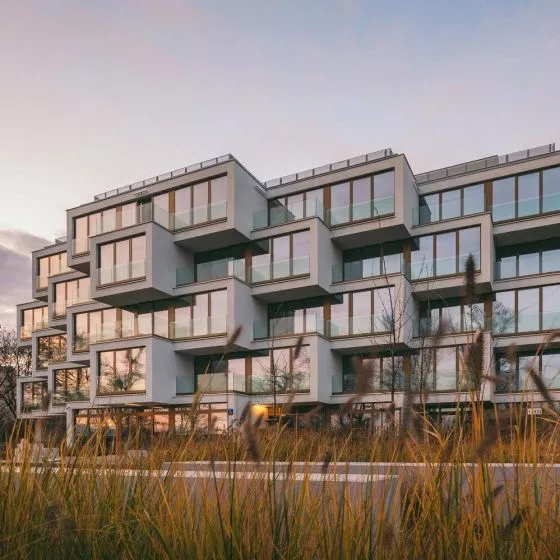treasures hidden between villas
For connoisseurs of original blocks, it will be exciting to walk through the quarters of villa developments. But not the historic, historical ones (by the way, there are not many of them in Warsaw), but the new ones, built over the decades of the turn of the 20th and 21st centuries. It is there that one can find a full wealth of forms and architectural ideas, from cubes made of hollow blocks to castles with turrets, from glass bungalows to concrete fortresses, from homely cottages to postmodern fantasies. But it doesn't stop there. There are treasures hidden between the villas. Take such a Wawer - a peripheral neighborhood of cottages, not very seemingly exciting. It is there, on Rezedowa Street, on the facade of the production building of the former Saturn Wheelchair Cooperative since 1965, there is a mosaic designed by Domicella Bożekowska.
A mosaic designed by Domicella Bożekowska on the facade of the production building of the former Saturn Wheelchair Cooperative
photo: Anna Cymer
The large composition depicts, among other things, scenes related to the cosmos and the latex goods produced by the cooperative. It is one of the most interesting mosaics in Warsaw, and in good shape to this day. In the same neighborhood, in a different quarter of a villa development, hides one of the little-known projects of the well-known studio Grupa 5 Architekci. It is the St. Benedict's Church, built in 1998-2000. The building, with its compact, austere body, is worth seeing not only to learn about the early design of the co-authors of the now iconic headquarters of the Radio and Television Department of the University of Silesia in Katowice, but also because we still know little about contemporary sacred architecture.
vanishing relics of the past
Hidden in the urban nooks and crannies of the capital, architectural treasures and curiosities can be listed for a long time. The search for relics of the past in Warsaw's Sluzewiec could be made a sporting discipline: the once-industrial district began to be turned into a business center in the early 1990s.
Relics of the past in Służewiec
photo: Anna Cymer
Today, modern office buildings dominate the area, and the whole neighborhood is called Mordor, but between the glassheadquarters of corporations you can still find memories of previous eras - both from the 1960s, when industry dominated here, and from the first years of developing Polish capitalism. Here, however, it's worth taking your time - because these relics are disappearing.
Surprises can also be experienced in the center, dominated by historic buildings - going a bit sideways from Dluga Street, which connects the Old Town with Bank Square, right next to the historic Arsenal building you can see the former headquarters of the Tele- and Radio Research Institute. Particularly noteworthy is the complex, hidden behind a Socialist-Realist edifice, consisting of a Brutalist concrete skyscraper and an accompanying pavilion, covered with a slate roof like those drawn by Arseniusz Romanowicz and Piotr Szymaniak for the stations of Warsaw's cross-city line.
Tele and Radio Research Institute, the complex consists of a concrete skyscraper and a pavilion covered with a shell roof
photo: Anna Cymer
Warsaw, as Poland's largest city, if only by virtue of its scale, offers the largest areas for urban exploration. It hides many treasures and delving into its little-known nooks and crannies is always productive. But similar wanderings can be practiced in any other locality. All you have to do is get off the beaten track, look around carefully and open yourself to what the city hides.

































































